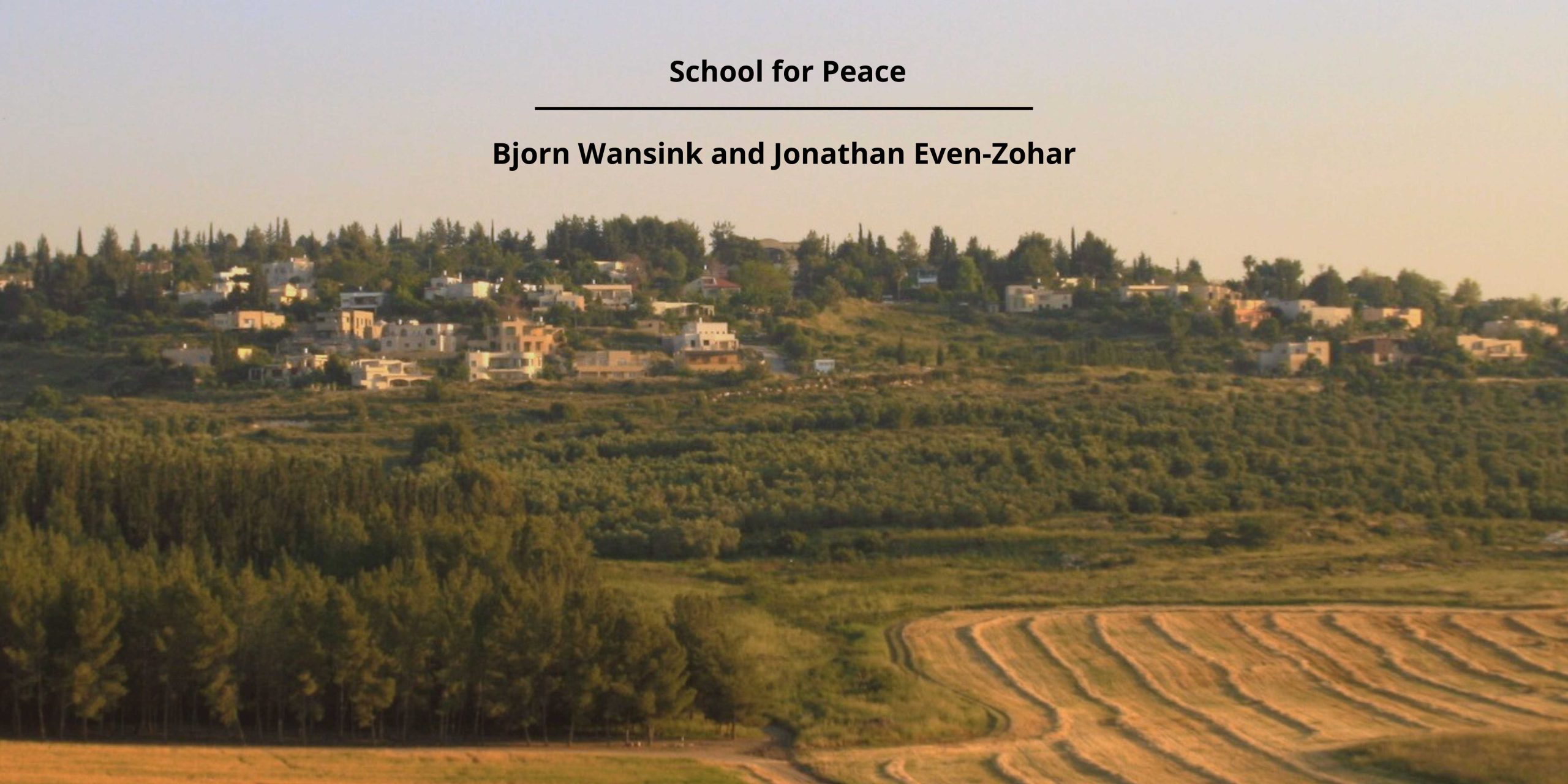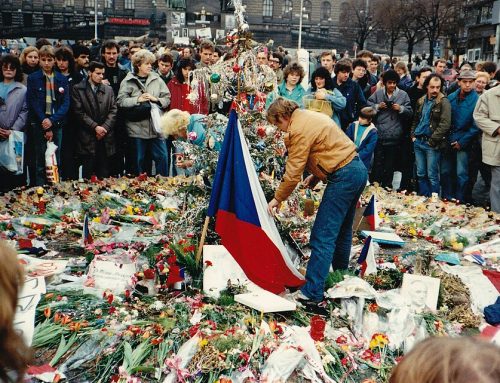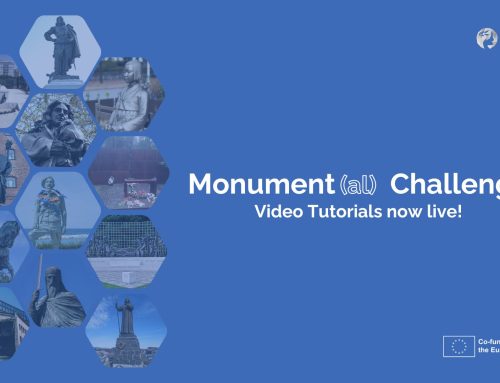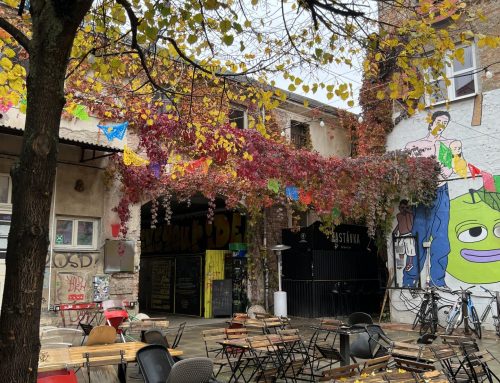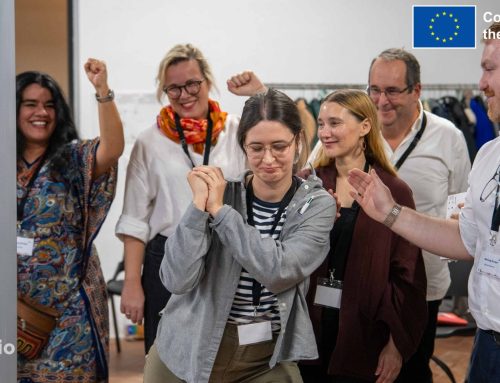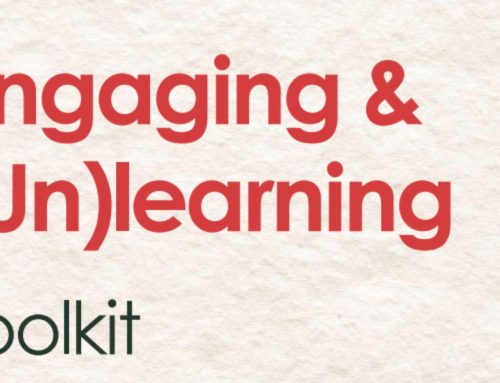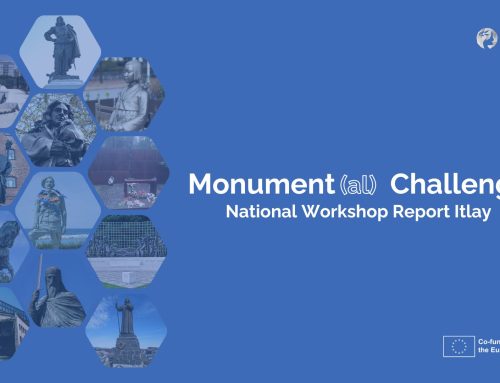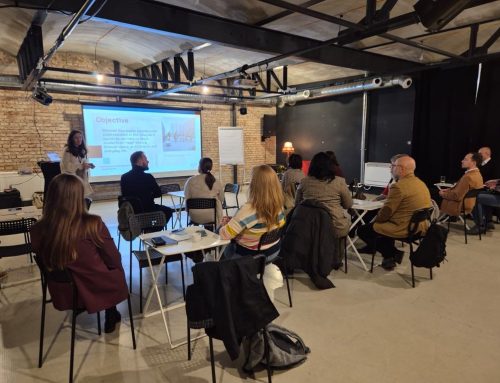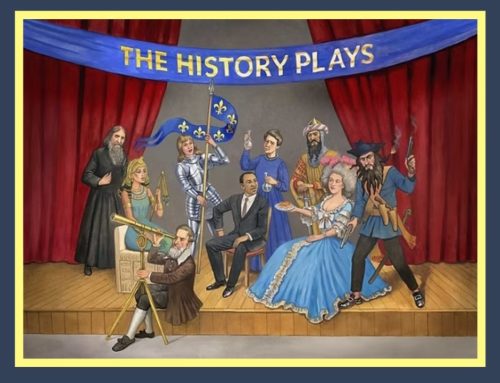Written by Bjorn Wansink and Jonathan Even-Zohar
In the midst of injustice, violence, and repression lies a village between Jerusalem and Tel Aviv called Neve Shalom-Wahat al-Salam, where Jews and Palestinian citizens of Israel live together. The founders of this village envisioned a future of coexistence for both identities. They developed their own rules for justice and equality in daily life, including founding a School for Peace, a dialogue centre for both young people and adults. This organization is at the forefront of waging difficult, painful, meaningful, actionable dialogue—dialogue that not only exists for its own sake but also stimulates action. It provides both a safe space for ‘feeling together’ and facing realities, which, in fact, is simply one shared reality.
Introduction
The School for Peace came into our focus for several reasons. Its current director Roi Silberberg attended the EuroClio Annual Conference in Antalya back in 2012. Following Jonathan’s meet-up with Roi last March, we knew it was important to shed light on hope, in such dark times.
We (the authors) both worked in various post-conflict countries, helping educators develop justice-oriented and peaceful history education. We have experienced how difficult social change can be, especially during or after war. We were intrigued that the School for Peace in Israel still held dialogue sessions between Jews and Palestinians. After the horrific attack by Hamas on October 7th, the Israeli government responded with brutal attacks in Gaza, killing so far about 40,000 Palestinians most of them innocent civilians, among them more than 15,000 children & using starvation of civilians as a weapon of war. Leading to condemnation by the United Nations, the International Court of Justice, the majority of the UN member states, and NGOs worldwide.
Amid this horror and power asymmetry, how do the two sides continue a dialogue? We asked the School for Peace if they would do an interview with us, and they agreed. We spoke to Roi Silberberg, the Israeli-Jewish director of the School for Peace and facilitator, and Shireen Naijar, a senior Palestinian facilitator. In this blog, we reflect on important aspects of the interview. We encourage readers to visit the School for Peace’s webpage or read books about their methods. There is much complexity and bravery in their work that we cannot fully capture in this short blog.
Creating a Dream: The Village Neve Shalom – Wahat al-Salam
Roi and Shireen not only work on dialogue but also live it as residents of Neve Shalom – Wahat al-Salam (NSWAS). This village was founded in the late 70s based on the idea that Palestinians and Jews wanted to live in peace and just & equal relationships with each other. This means an equal number of Palestinians and Jews live in the village, and the children attend the same school, learning both Arabic and Hebrew. As not everyone could live in the village the community also started to think about how to create a society that is just and equal. They decided to build an institute or organization, not just for kids but for adults to show what they do. This became the School for Peace. Shireen, the first Arab Palestinian girl born in the village, explained how this first generation of village parents wanted to spread their dream. They started bringing together groups from different backgrounds to create genuine egalitarian dialogue. Roi said the school began with bringing people together for dialogue, but over time, it evolved and developed its methods. Today, the organization is very reputable and professional, working not only in Israel but also in other contexts like Rwanda and Northern Ireland.
The Purpose of Dialogue in Asymmetrical Power Relations
The goal of the School for Peace is to strive for an equal and just relationship between Jews and Palestinians in an unequal context. These goals function as a moral anchor point underlying the dialogue sessions and methods used. Roi pointed out that they are not engaging in dialogue just for dialogue’s sake, but to make change and be transformative. The method is related to Freire’s philosophy of changing people’s awareness. It is about the deep connection between awareness and action. Roi said, “So, if you are changing your awareness, it means that now you think differently, you act differently. So, now you act. There is some action happening, even small, even banal, but it’s coming out from a different awareness.” This can work as a circle in which people become increasingly aware that their actions are not in line with their beliefs. Roi said they are playing with this praxis circle in two different ways. First, within the group where the dialogues are held. These groups function as a microcosm of reality, meaning what the group says also reflects reality. The small group reflects the larger national group or the nation. Second, if they can make a change within the group, the participants can also make changes outside the group. It might start small, but it can grow bigger and bigger. It doesn’t need to directly impact the whole society. But when participants go home, they hopefully speak out, for example at the dinner table. It is in these everyday contexts where change can start.
Why Persist in Dialogue Amidst Violence?
During the interview, we talked about how to stay in dialogue amidst so much violence and injustice. We asked Shireen what Palestinians gain from this dialogue. She rhetorically returned to us what their choices are. She wants to make a change, and the alternative to dialogue is violence against a much more powerful state. Shireen points out that there is violence, and occupation, and this should stop. She quoted her father, who pointed out that having an enemy is easy; the hard work is to make your enemy your partner. Shireen said that this is what they are trying to do. Still, the unequal power balance raises important political and ethical questions, including whether having the dialogue actually legitimizes and normalizes the unequal reality. This is especially the case during war, where these political questions become even more prominent. We learned that the facilitators of the School for Peace are very aware of this ethical dilemma. Creating a safe environment is of great importance. Safety is a basic need for humans, and in moments of crisis, when safety is violated, people go into survival mode to protect themselves. The School for Peace tries to restore a sense of safety that might help bring people out of survival mode and enable them to act in a compassionate, and considerate way. However, ongoing war will lead to more violence and hate as there is no safe place. The School for Peace operates on the idea that a safe space can only emerge in the presence of the “other” since the ongoing lack of safety is rooted in the traumatic relationship with the “other.” This means both groups need to go in dialogue with each other. However, Shireen also explained that sessions are not always bi-national. There are also uni-national sessions with only Palestinians orJews. She explained that some topics can only be discussed within one’s own group. For example, Shireen discusses with Palestinians living in Israel how they contribute to creating an equal society, whether they will be silent or speak out, and why. Roi points out that he discusses with the Jewish group their fears, which he calls the ultimate nightmare, in which Jews can think there will be no future for them in Israel and how this fear is managing them. According to Roi, this fear of each other leads to radicalization and extreme violence in current society. After such uni-national sessions, the groups meet again, always with two facilitators—one Palestinian, one Jewish—usually also mixing genders.
Confrontational Dialogues
Listening to Roi and Shireen, it became clear that dialogue and peace work is about the ability to talk about the conflict. Moreover, it is about the ability to wage conversations that keep asking questions. If something is difficult for a person to say, the facilitators will try to find a way to talk about why it is difficult.
One core concern from the Jewish side is to open their eyes to the reality of the conflict. “It is the same air, the same water, the same soil,” Shireen shared a powerful example emerging from one of the sessions. She explained how a group she facilitated took action to write to all Israeli environmental agencies about the devastating environmental impacts of the ongoing assault on Gaza. No one replied, but the action itself held a transformative value.
This piercing of the dominant reality narrative created inside Israeli society sits at the core of the work. Roi explained “Netanyahu has managed to keep the status quo stable for so long that it gave a false sense of certainty, while the decline was slow but always there. We are the breakers of this perceived stability.”
When having dialogue with Palestinian groups only, Shireen noted the need to face the reality of Palestinian society’s daily struggles, such as raging crime and violence in the Palestinian society in Israel,and other topics which are influenced by the conflict but include as well inner Palestinian challenges.. Putting reality on the table means that facilitators are constantly navigating the space between dialogue and context.
We also learned that Roi and Shireen can be facilitators because they share the same experiences as the participants in the School for Peace. Shireen partly lives the same life, creating a connection between facilitators and participants. They both work from a humanitarian perspective, believing in human values. Shireen referred to herself as a mother, a woman, and a human being. As a facilitator, she calls upon these aspects. They try to make a connection based on fundamental human needs. Shireen practices this not only as a facilitator but also outside the school. She told us how she went to a demonstration calling for the return of Israelis held in Gaza, despite her husband advising against it due to the risks of wearing a hijab there. Despite being surrounded by flags which are not her, she did go to raise her humanitarian voice.
The Dynamics of Words and Identities Over Time
One of the challenges and divisive aspects in conflict-ridden societies is language, as words can represent certain power relations. Shireen told us how terminology has changed over the years, using different words like Palestinian, Israeli, Arab, Jew. In the 80s, it was forbidden to say Palestinians, so they said Arabs, or Arab-Israeli, or Arabs from Israel. Terminology is dynamic and depends on the broader political context. Shireen said that jihad was an easy word to say in the past, but today it could be connected to terror, so she avoids it, opting for terms like “my own path” or “my own peaceful something.” This is directly related to identities, which are also dynamic. Shireen is very aware of the broader context and how it influences what can and cannot be said. She referred to the 80s when she drew a Palestinian flag and put it in her room. Her aunt warned her that if the Jews saw it, she could be jailed. Her grandmother, who lived through 1948, remained silent about politics and history. Shireen said that in the 90s, during the Oslo process, Israeli and Palestinian flags and songs were more visible. However, after 9/11, everything changed again, and expressions of Muslim identity became more difficult. After October 7th, it became even harder to show aspects of Palestinian identity. Shireen stayed in the village for months as it was her safe space, avoiding the outside where she couldn’t fully express her identity. Due to the high pressure, there is much more caution about what to say. Saying the wrong words can come at a high price.
The Role of the Past
Finally, we asked Shireen and Roi about the role of the past during dialogues. Shireen explained that usually, one voice will speak about the Nakba. Again as we have written, the group reflects a microcosm of reality, meaning what the group says also reflects reality. If one voice wants to speak about history or the Nakba, often the other group does not. Some voices will state that this discussion about the past would be endless. However, for Shireen, it is about the needs of the people in the room. She uses a metaphor to talk about this issue, comparing it to being in a couple. “Who is still hurt wants to speak about it. No, we didn’t finish, you know? No, yesterday, we didn’t finish the story. We still have troubles from yesterday.” This means that the pain is not gone and still needs to be addressed as it continues to influence their lives. Shireen also noted that in broader Israeli society, these topics are not everyday conversation. Therefore, the emergence of talking about history in the context of Jewish-Palestinian dialogue can be a way to talk about the present, or a way to not talk about the present – always bound to an emotional motivation to show the other which pain is present.
Final thoughts
We both live and work in The Netherlands. We have different personal and professional ties to this conflict. We both plea for an immediate cease fire, the amount of killing is unacceptable and war crimes should be investigated and punished. This war will bring no peace to the region and is only spreading hatred and violence, which must be stopped.
Meeting Roi and Shireen gave us a unique insight, slivers of hope and concerns. They work toward peace while nested in a community which lives and breathes dialogue. The facilitators have a very deep intrinsic, and arguably life long, motivation to not give up, to ‘wage dialogue’ and a unique – common – reality of manifesting it. We also see just how much energy, perseverance and faith this requires of them individually and collectively. How can this community and the School for Peace be better supported?
Dialogue is a (serious) play between (a) safe and brave spaces to feel together, listen, talk and ask the difficult questions and (b) the daily reality in which the people live. The facilitators of School for Peace work in an extremely challenging reality and have built a unique sensibility to conduct this dialogue. How can this sensibility also be understood and felt better in our countries, in the world, which in the context of this conflict is not ‘simply standing by’.
As we are writing this on the platform of EuroClio, a community with a lot of experience on how to deal with sensitive and controversial history – always in the context of the present. Our conversation with Roi and Shireen raises some questions regarding the European classroom setting, and we would like to start a conversation: What did you encounter in your classroom when talking about the Israeli-Palestinian conflict, the violence enacted, the protests, the history, and so on. What would you think could be the role and potential of amplifying the voices for peace in your educational context? Let us be in dialogue.
Find out more
The website of the School for Peace offers a lot of resources on the work. A recent article published by The New Yorker provides a great story about the village where the School for Peace is situated and how it has been impacted by the escalated conflict. This village, including the School for Peace, as well as other more Artistic and Spiritual endeavor’s, can also be engaged through various ‘Friends Associations’ across the world.
Contact
If you want to have contact with authors:
If you want to reach out to the School for Peace

